Accidental Learning
The article below was written for the tuisskolers.org blog by Louise Wells.
Many parents ask me for extra work when their child is struggling with Maths. There is nothing worse for a child who is battling with Maths to have extra worksheets or to be told they are going to do extra work. It makes them feel even worse about the subject and they lose confidence in themselves.
Try to do “accidental learning” . What I mean by that is, do it without their knowledge or in such a way it does not impact on their play time, (remember they are children and playing also forms part of their development, either physical, socially or mentally). Do the timetables in the car in the morning on the way to school, in fact any time you are in the car together is the ideal time. Even on long holiday trips. Try to make it fun, get dad involved. Passing cars number plates can be used for adding or multiplying numbers.
There are timetables sing-along disks on the market which can be listened to on holiday trips. It might drive mom and dad mad but your child will benefit.
Maths is like sport and fitness. If you don’t do exercise, one becomes unfit! Maths is the same. During holidays when the brain is not stimulated one becomes “Maths unfit”. The child has to start all over again the following year. But if you keep the timetables and bonds going during the holiday season, the child does not start right at the beginning again and can build on what they know and possibly move ahead.
Working on the basics is most important. Once children know their bonds, they will add and subtract faster than others in their class thus gaining confidence. Secondly knowing timetables will help with multiplication and division sums and fractions (fractions are a very large part of the school syllabus in the primary and high school).
The next thing I suggest (taken from “Mom’s Maths Manual by Louise Wells”) is the following:
Many children do not know their basic addition (bonds).
It is very important in the beginning stages for your child to see the numbers to be able to add. After they have mastered the skill, say the numbers orally in the car on the way to and from school (even holiday trips).
At the breakfast, dinner table or in front of the TV, play with dice. Take turns to roll the dice and say the answer. Encourage your child not to repeat the roll of the dice – just say the answer. e.g. the dice rolled 1 and 4 (don’t say the “1 plus 4”) Just say the answer 5. Repeat this over and over until they are flawless and fast, using two normal marked dice.
Then “doctor” the dice using tippex and a permanent marker, change the dots to make a seven, eight, nine and ten. If the dots are too difficult to write, write the digits on with the permanent marker.
Use the one normal dice and the one “doctored” dice until the child can answer flawless and fast. Use both “doctored” dice until the answers are flawless and fast. Important – make a game of this.
Bonds of ten (10) are very important. If a child knows their bonds of ten, their adding and subtracting skill will be better and faster.
What are bonds of ten (10)? Any two numbers that when added have an answer of ten. 8 + 2 = 10 extension 18 + 2 = 20 and 8 + 12 = 20 ==> 28 + 2 = 30 and 8 + 22 = 30
Use the mirror or white board in your child’s room or a white board on the fridge to write out bonds of ten. When your child comes past the board again, they write the answer. You mark it (leave for them to see their mark) and set out a few more sums. Always add an encouraging comment.
6 + ? = 10
? + 7 = 10
2 + ? = 10
10 + ? = 10
? + 5 = 10
1 + ? = 10
Buy different colour white board markers. Prestik the markers tip down on the mirror or white board (white board markers last longer tip down).
Bright colours and learning with mom makes it much more fun.
As they master the skill, slowly increase the level of difficulty.
This can be used throughout the year with all the maths (timetables, adding sums, subtraction sums and division sums etc).
Flash cards are a wonderful tool to teach adding skills. They can be bought at any educational store. You could also make your own.
But if you don’t wish to do either. Use a deck of cards to do the same thing.
Explain the value of the cards.
2 to 9 are the value as shown on the face of the cards.
A (Ace) is equal to one.
J (Jack), Q (Queen) and K (King) each has the value of ten.
Exercise 1:
Lay the cards on the table and ask your child to identify the cards. Muddle the cards and ask them to set them out in numerical order (Use words such as ascending and descending).
Exercise 2:
Lay the cards out on the table and ask your child to pick out all the even numbered cards. Repeat, asking for all the odd numbered cards.
Exercise 3:
Let you child group cards with the same shapes e.g. hearts, diamonds, clubs or spades, as quickly as they can.
Exercise 4:
Let them group cards with the same numbers as quickly as they can.
Exercise 5:
Lay the cards out on the table and ask your child to pick out two cards which will add up to 10. They should then select the 2 and 8 , 3 and 7 , 6 and 4
Exercise 6:
Lay the cards out on the table and ask your child to pick out three cards which will add up to 10. They should then select the
1 (A) + 2 + 7
8 + 1 (A) + 1(A)
6 + 2 + 2 etc
Extension – select cards that will add to 15, then 20 and so on. (Use more than one pack of cards)
Exercise 7:
Hold up two cards (flash them) and ask what the sum of the cards are, any combination. Once they have mastered adding two cards, repeat using three cards, then using four cards.
Further “accidental learning” can take place while shopping. Compare food items. How many 500 g packets of sugar will weigh the same as a 1 kg (Cans of cool drink to 1 litre bottles etc) . Ask simple distance and time questions. It does not need to be difficult. But be able to stimulate reason and understanding and comparison of items. By the time the teacher starts to cover cost per kg (R/kg) they will have some form of knowledge of the topic. This will give them a great advantage over other classmates.
When at the till, simplify the amount of money and change. Ask, “If my shopping costs R150 and I give the cashiers R200 how much change will I receive?” As they master the skills of comparison and working with money (change) increase the level of difficulty.
I have been teaching >24 years and have come to a firm conclusion that the pupils nowadays are a very visual generation. (We were the listening generation… Squad cars, Men from the Ministry, Hitchcock half hour, Three wise men, Tracey Dark etc….remember?). The “now” generation as I said are VISUAL and are unable to process without seeing.
The more “accidental learning” and practical learning they do the better. Children nowadays use cell phones, remotes etc, and all high speed electronic gadgets at their finger tips. Visual and practical. Gone is the imagination.
Therefore I believe do as many visual and practical activities as you can. Always explain why! Children have enquiring minds and learn better when one explains”why”. As you explain why a sum is to be done in a certain way or how something works, get them thinking.
All your input will aid your child to be a better Mathematician.
Louise Wells
www.momsmathsmanual.co.za
This email address is being protected from spambots. You need JavaScript enabled to view it.
Cell: 083 476 8207
Fax: 086 652 0410
By Louise Wells
Author of Mom’s Maths Manuals
2011 Mathematics Provincial Teacher Challenge (Winner)
2011 National Teachers Awards (Nomination)
2009 National Teachers Awards (Cluster Finalist)
Events
Legal & Research
Homeschooling and the law
Home schooling was recognized in 1996 in Section 51 of the SA Schools
+ ViewCentres
Homeschool ABC
Support
Curriculums
Ginini Training Institute
Ginini Academy is an EdTech home education content provider ...
Elroi Academy (Gr 8 - 12)
Elroi Academy – Top-Rated Distance Education Provider in South ...
Impaq: Homeschool & Online ...
Impaq: The leading homeschooling curriculum provider in South ...
Cambridge & International ...
As of 1 January 2025, Macmillan Education is the sole agent ...
Frequently Asked Questions
-
Can I be a working mom and homeschool?
Single parents who are committed to homeschool organize a schedule around their work commitments and sometimes involve family or tutors to assist...
-
Do home learners sometimes wish they were in school and were normal?
They generally like being homeschooled. Some homelearners go to school for the experience but many return to homeschooling as within the homeschool...
-
Do homeschoolers take holidays?
Yes, they take breaks. Some homeschool families follow the public school year calendar especially if they are involved in sport and music...
-
Is homeschooling legal in South Africa?
Yes. Since 1994, the right for parents to home educate their children was legalised in South Africa through the adoption of the new constitution. In...
Has no content to show!

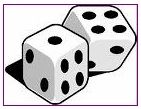







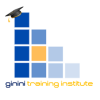

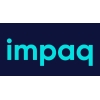












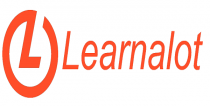






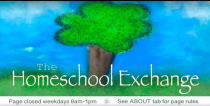
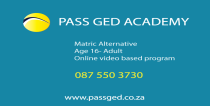


Comments